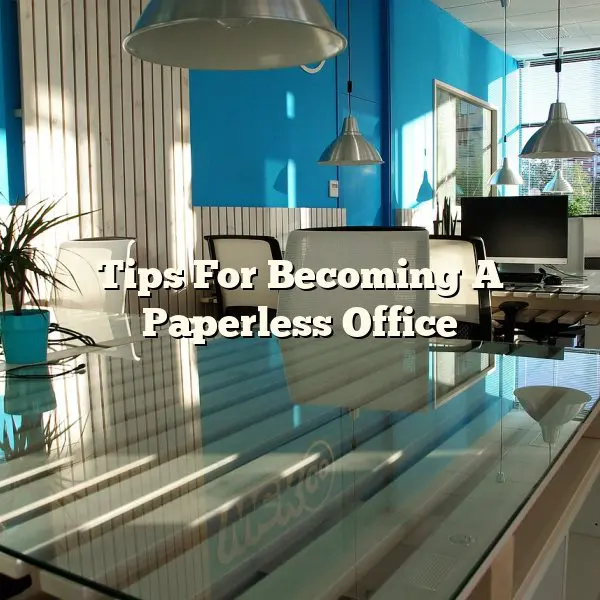Trillions of sheets of paper are used, often needlessly, on a daily basis. One of the trends becoming popular today is becoming a paperless office. The transition saves corporations money, reduces the use of natural resources and in many cases is easier than one would think. Here are some tips to help your business make the changes.
One of the ways to make the reduction is to start sharing memos and documents electronically. Programs allow employees to all have input with ideas. Documents that must be sent to other companies are saved as locked PDF files to ensure they are not changed.
You can reduce the amount of paper that comes into the business through the mail. Switch to electronic bank statements and online billing. Reduce the paper used for checks by paying invoices electronically. Use direct deposit for employee paychecks.
Store files electronically as well. This becomes easier as you make the switch. Unless older paper files are accessed on a regular basis, you may want to leave them as they are. Those for which you need regular access can be scanned and stored electronically.
Use an online fax service to eliminate the need for printing and faxing documents. These services allow you to send documents directly from your word processor. Incoming faxes are directed to your email in-box where they can be stored in the appropriate electronic file.
Group presentations can be done using electronic files instead of sheets of paper. Eliminate the need to ask everyone to turn to the goldenrod page. Some programs allow the participant to use a smart-phone to make notes directly on the presentation material for later reference.
Have an effective plan to backup important data. While you should already be doing this, without the paper copy, it becomes more important than ever. Talk with your IT department before making the decision to eliminate paper to ensure your company has the support necessary to make the change.
While you can greatly reduce the paper used, you may still find a few items that cannot be stored electronically. For example, you will want to keep track of original notarized documents that may be important. However, you can eliminate much of the waste associated with doing business and conserve many natural resources by implementing a recycling plan.
A paperless office is a great goal for many businesses. Once you have a plan and the necessary software, set a date to implement the changes. Once employees make the change, most will appreciate the convenience electronic files provide.
Loris F. Anders is an office management specialist focused on optimizing workflow processes in document management. If you would like to learn more about go paperless, she recommends you check out Docufree


